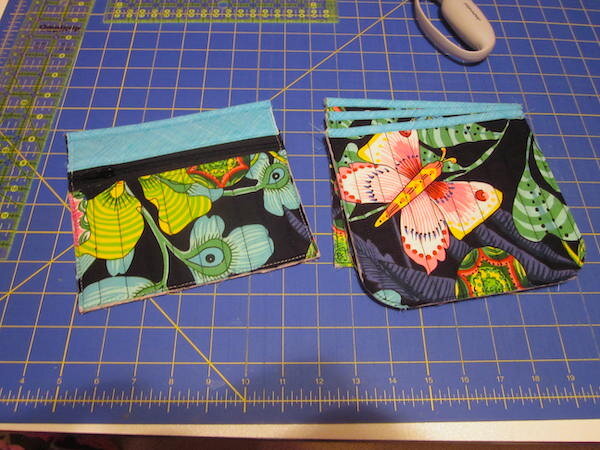Rooster or Hen?
In my reading about how to determine if chicks are roosters or hens, I ran across this website with a good explanation of using the difference in wing feathers to sex chicks. We will have to wait until the chicks are older for verification of its accuracy, but I can see some differences. Apparently, rooster chicks have wing feathers that are the same length while hens have wing feathers that vary in length.
I am 99.99999% sure that the chick in the middle of this photo is a rooster:
His wing feathers are all the same length. He is also sporting some pretty nice tail feathers. This particular dude is the largest and most aggressive chick of the whole bunch, and tends to strut around like he owns the place. He may require an attitude adjustment from Big Daddy (that’s our rooster’s new name) when he is older. He is also the handsomest of the chicks, being an allover creamy white color with black striping on his wings. I’d be inclined to keep him if he doesn’t end up being too full of himself.
Sometimes the little suspected rooster chicks puff up their chests and go at each other in a miniature display of male dominance. Besides being entertaining, watching their behavior is a good way to get to know their personalities. I spend a lot of time in the chicken coop looking over the edge of the brooder box.
It’s hard to see because of the heat lamp—and I don’t want to handle the chicks more than necessary—but this one is likely a female:
Her wing feathers go from short to long.
Another way to determine if chicks are hens or roosters is to use sex-linked characteristics—specifically, down coloring patterns. I need to print out a cheat sheet and take it out to the coop with me and examine individual chicks. Sex-linked characteristics depend on the breed of the father, the breed of the mother, and whether the chick is male or female. Those spots on the heads of some of the chicks are sex-linked characteristics.
My initial assessment of the gender distribution in this batch of chicks is 4-5 likely roosters and the rest hens. I’lll be thrilled if we do indeed get 12 hens out of a group of 17. That is as many pullets as we were planning to get from the farm store and more than I was expecting. I would have been satisfied with half and half.
Time will tell, though.
********************************************************
Work on the GOOT bag continues here and there—yesterday afternoon, I assembled the front zipper pocket and bound the top edges of the other pockets:
For once, I lucked out with the zipper. I like the way the designer has you assemble the zipper pocket, but it requires using a zipper a few inches longer than the opening. Once it is inserted, you cut the excess zipper tape from both ends. I went digging through my zipper collection and fished out a 10” length of zipper tape that must have been left over from another bag project as it had been cut on one end. A zipper pull was still attached. Yay! I had the correct zipper in the correct length and got to use up a leftover.
The rain continues and I do not have to go anywhere, making this a good day for sewing. I’ll work on the GOOT bag, but I’d also like to get some quilt tops basted together in anticipation of quilting them. The husband asks me periodically if I would like a longarm machine; I would, but we really have no place to put it. I do look at the smaller, sit-down longarm machines from time to time. Perhaps one of these days. For now, the Janome does a fine job.
The thread rack at Joanns is about half empty, and from what I understand, they are having trouble restocking other products. I have plenty of thread, but I’ve been picking up packages of rotary cutter blades as they go on sale because I wouldn’t be surprised if they become scarce, too. I’ve kept all my old blades and could sharpen them if I have to. Re-sharpened blades don’t work quite as well as new ones—I’ve tried all the tricks and I also have an electric sharpener—but in a pinch, they’ll do.



